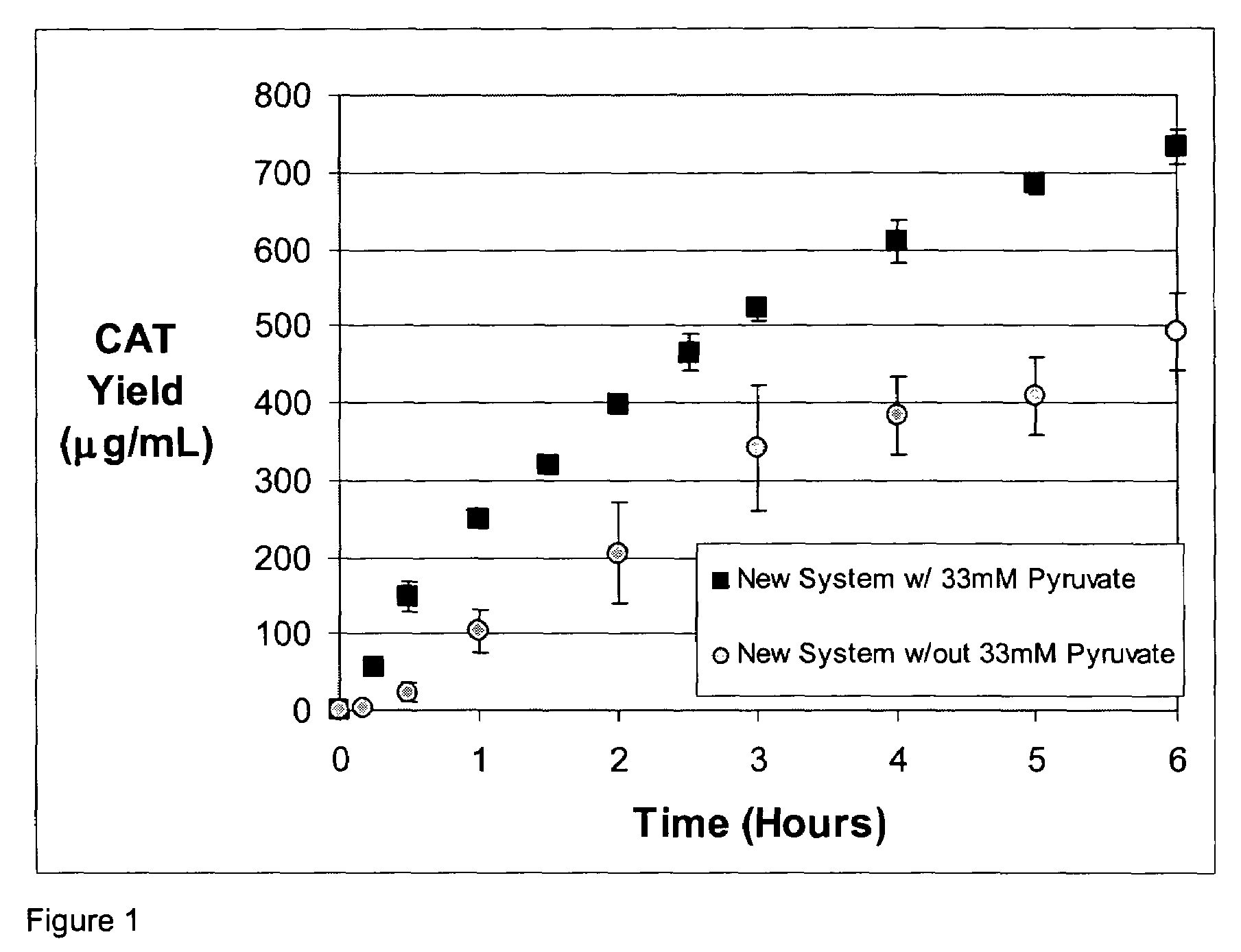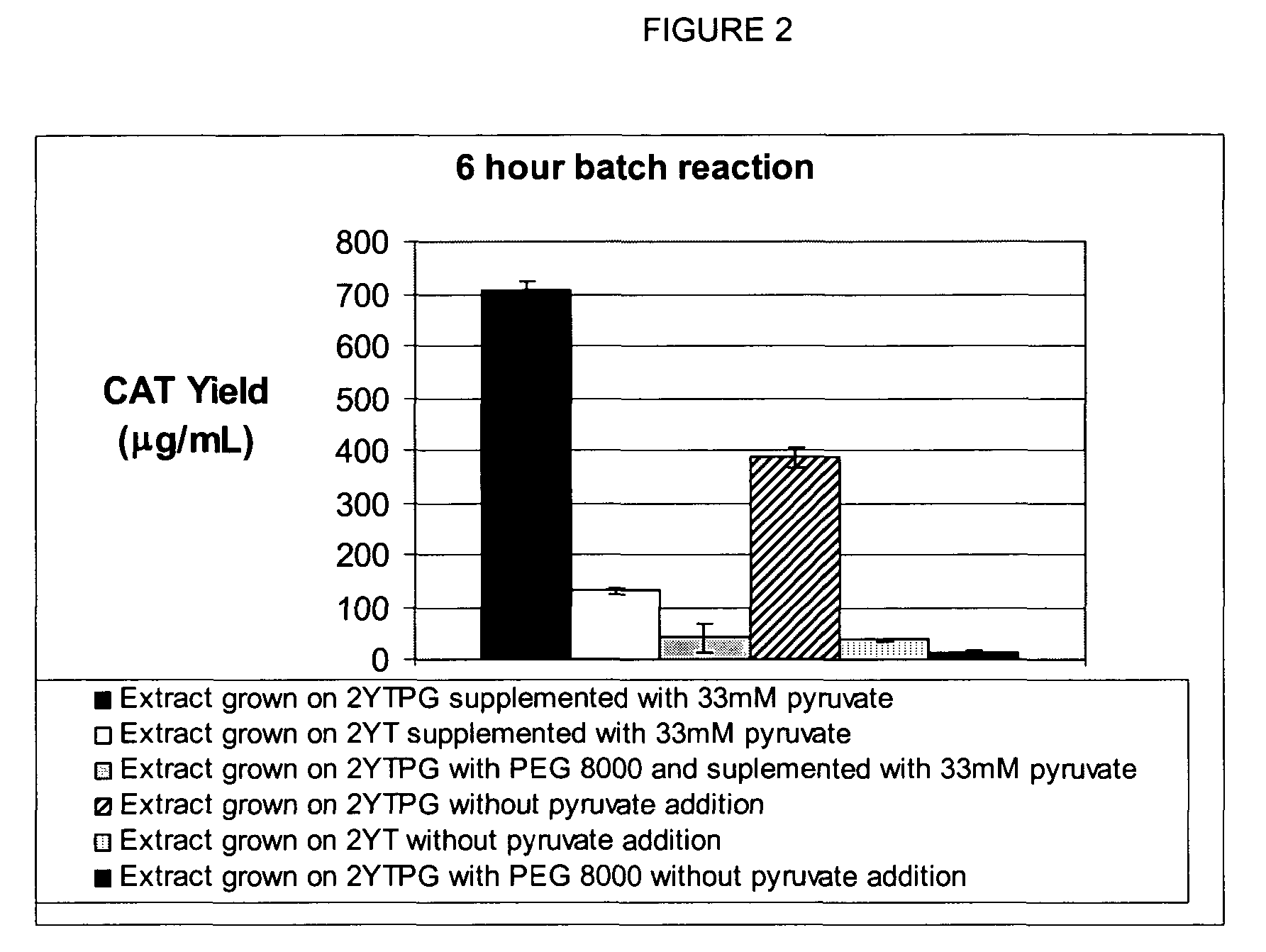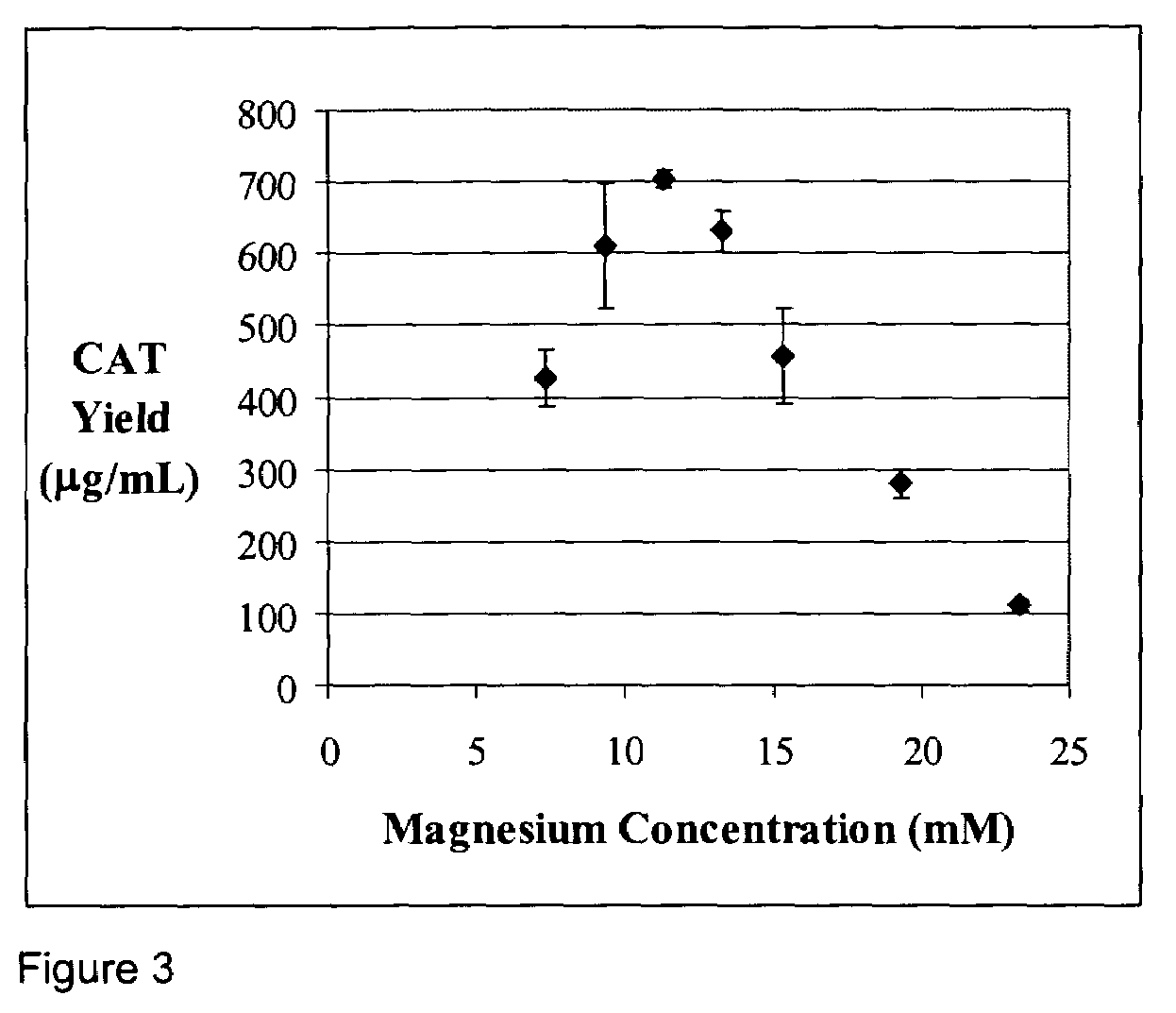Methods of in vitro protein synthesis
a protein synthesis and in vitro technology, applied in biochemistry apparatus and processes, microorganisms, fermentation, etc., can solve the problems of poor protein synthesis yield, excessive reagent cost, and limited practical use and large-scale implementation, and achieve convenient and economical production of large quantities of protein
- Summary
- Abstract
- Description
- Claims
- Application Information
AI Technical Summary
Benefits of technology
Problems solved by technology
Method used
Image
Examples
example 1
[0052]A standard reaction mixture for a coupled transcription-translation reaction, herein referred to as the PANOx system (Kim and Swartz (2001), supra.) contains the following components: 57 mM HEPES-KOH (pH7.5), 1.2 mM ATP, 0.85 mM each of GTP, UTP and CTP, 1 mM DTT, 200 mM potassium glutamate, 80 mM ammonium acetate, 16 mM magnesium acetate, 34 μg / ml folinic acid, 170.6 μg / ml E. coli tRNA mixture, 13.3 μg / ml plasmid, 100 μg / ml T7 RNA polymerase, 2 mM each of 20 unlabeled amino acids, 11 μM [14C]leucine, 2% Poly(ethylene glycol) 8000, 33 mM PEP, 0.33 mM nicotinamide adenine dinucleotide, 0.26 mM Coenzyme A, 2.7 mM sodium oxalate and 0.24 volumes of S30 extract. Prokaryotic cell-free protein synthesis is performed using a crude S30 extract derived from Escherichia coli K12 (strain A19 ΔtonA ΔtnaA ΔspeA ΔendA met+), with slight modifications from the protocol of Pratt, J. M. 1984. (Coupled transcription-translation in prokaryotic cell-free systems. In Transciption and translation: ...
example 2
Effect of a Larger Scale Reaction Volume
[0063]Protein synthesis, using the methods of the invention, was performed at a 5 ml scale for synthesis of chloramphenicol acetyl transferase (CAT). Reactions were carried out at 37° C. in a 10 ml stirred glass beaker. CAT expression was determined from 14C-leucine incorporation. A small piece of stainless steel wire was threaded through a 30 cm long piece of silicone tubing. About 15 centimeters of the tubing (1.47 mm ID, 1.96 mm OD) was immersed in the cell-free reaction mixture by coiling inside the reactor. This tubing was pressurized with pure O2 to deliver the oxygen necessary for the regeneration of ATP within the cell-free protein synthesis reaction. The consumed / degraded substrates were added in the following concentrations: 0.5 mM CTP, 0.5 mM UTP, 1.8 mM potassium hydroxide, 0.5 mM asparagine, 0.5 mM glutamine, 2 mM cysteine, 1 mM serine, 10 mM potassium glutamate, 0.05 mg / mL T7 RNA polymerase, and 0.007 mg / mL pK7CAT plasmid. The am...
example 3
Effect of Cofactors
[0065]Protein synthesis reactions were set up as described in Example 1 for the Cytomim system. 15 μl reactions were performed for 6 hours, expressing CAT. The error represents the standard deviation from 4 separate experiments. An “x” indicates the presence of that component. Protein production is given relative to a control with NAD and CoA. The control reactions (with NAD and CoA) produced 727 μg CAT / ml.
[0066]The concentration of cofactors CoA and NAD were varied as set forth in Table 2. As evidenced by the relative protein production, the removal of CoA had no significant effect. The removal of NAD reduces synthesis by about 10%.
[0067]
TABLE 2ExpressedRelative ProteinProtein0.33 mM NAD0.26 mM CoAProductionCATxx 1 0.03CATx0.91 0.05CATx1.02 0.1 CAT0.86 0.03
PUM
| Property | Measurement | Unit |
|---|---|---|
| volume | aaaaa | aaaaa |
| volume | aaaaa | aaaaa |
| volume | aaaaa | aaaaa |
Abstract
Description
Claims
Application Information
 Login to View More
Login to View More - R&D
- Intellectual Property
- Life Sciences
- Materials
- Tech Scout
- Unparalleled Data Quality
- Higher Quality Content
- 60% Fewer Hallucinations
Browse by: Latest US Patents, China's latest patents, Technical Efficacy Thesaurus, Application Domain, Technology Topic, Popular Technical Reports.
© 2025 PatSnap. All rights reserved.Legal|Privacy policy|Modern Slavery Act Transparency Statement|Sitemap|About US| Contact US: help@patsnap.com



